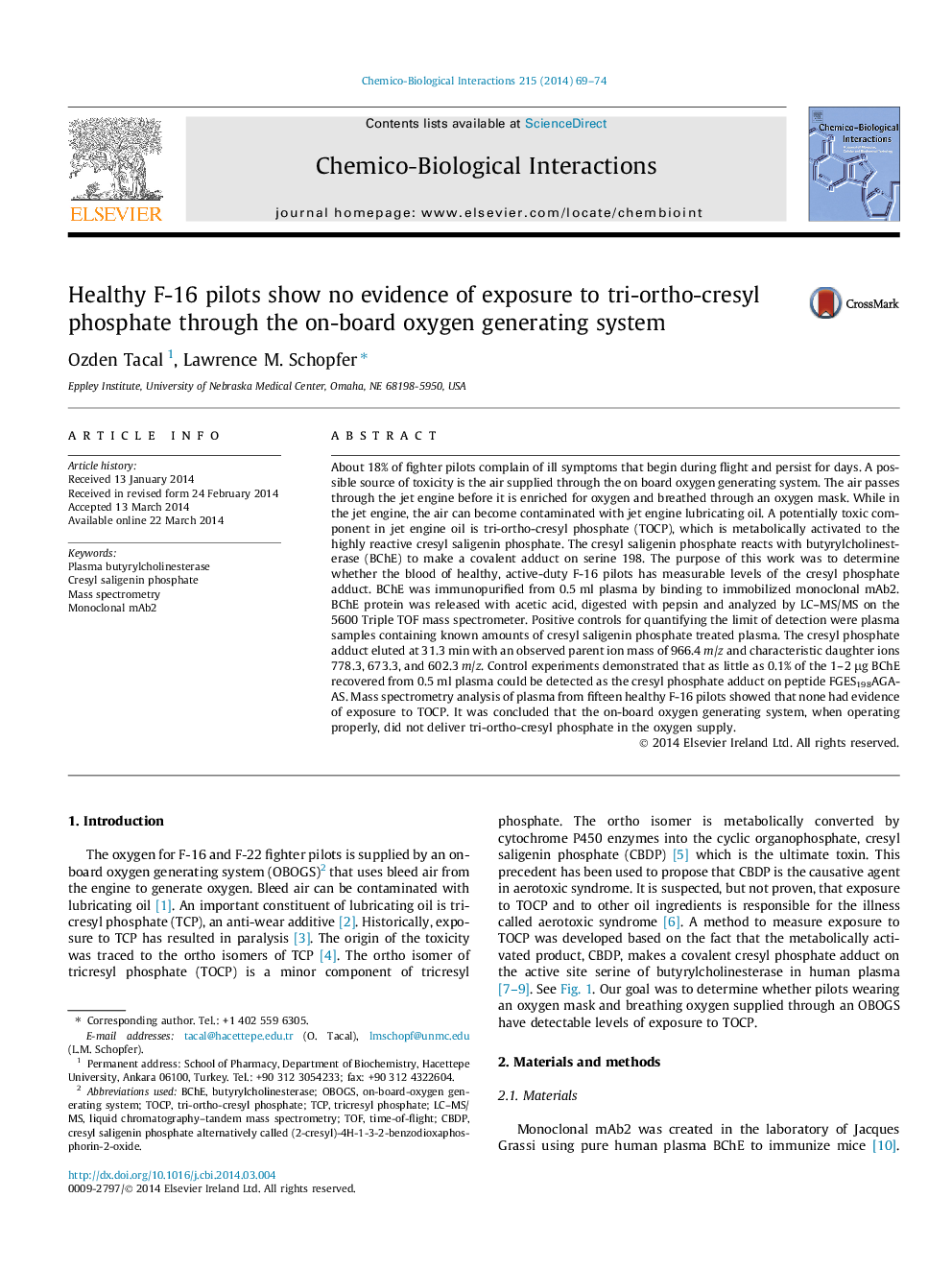| کد مقاله | کد نشریه | سال انتشار | مقاله انگلیسی | نسخه تمام متن |
|---|---|---|---|---|
| 2580482 | 1561626 | 2014 | 6 صفحه PDF | دانلود رایگان |

• Examination of F-16 pilots for exposure to tri-o-cresyl phosphate contaminated air.
• Immunopurification of plasma butyrylcholinesterase with monoclonal mAb2.
• Mass spectral quantitation of peptide FGESAGAAS cresyl phosphate.
About 18% of fighter pilots complain of ill symptoms that begin during flight and persist for days. A possible source of toxicity is the air supplied through the on board oxygen generating system. The air passes through the jet engine before it is enriched for oxygen and breathed through an oxygen mask. While in the jet engine, the air can become contaminated with jet engine lubricating oil. A potentially toxic component in jet engine oil is tri-ortho-cresyl phosphate (TOCP), which is metabolically activated to the highly reactive cresyl saligenin phosphate. The cresyl saligenin phosphate reacts with butyrylcholinesterase (BChE) to make a covalent adduct on serine 198. The purpose of this work was to determine whether the blood of healthy, active-duty F-16 pilots has measurable levels of the cresyl phosphate adduct. BChE was immunopurified from 0.5 ml plasma by binding to immobilized monoclonal mAb2. BChE protein was released with acetic acid, digested with pepsin and analyzed by LC–MS/MS on the 5600 Triple TOF mass spectrometer. Positive controls for quantifying the limit of detection were plasma samples containing known amounts of cresyl saligenin phosphate treated plasma. The cresyl phosphate adduct eluted at 31.3 min with an observed parent ion mass of 966.4 m/z and characteristic daughter ions 778.3, 673.3, and 602.3 m/z. Control experiments demonstrated that as little as 0.1% of the 1–2 μg BChE recovered from 0.5 ml plasma could be detected as the cresyl phosphate adduct on peptide FGES198AGAAS. Mass spectrometry analysis of plasma from fifteen healthy F-16 pilots showed that none had evidence of exposure to TOCP. It was concluded that the on-board oxygen generating system, when operating properly, did not deliver tri-ortho-cresyl phosphate in the oxygen supply.
Journal: Chemico-Biological Interactions - Volume 215, 25 May 2014, Pages 69–74